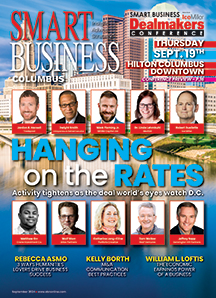“An innovative reimagining of obsolete urban industrial spaces”— that’s how the Pennsylvania Chapter of the American Planning Association describes The Strip District, one of its four 2014 Great Neighborhoods in Pennsylvania.
I’ve always loved the bustle of The Strip, with its mix of tourists and locals bumping into each other as they search for bargains. (Although, I admit sometimes I feel like there’s a neighborhood ordinance that Steelers gear must be sold every 200 feet.)
In many ways, it represents the heart of new Pittsburgh, where gritty warehouses have been turned into modern market stalls with organic products or decorative jewelry. So, that’s why it makes a perfect subject for this month’s Uniquely Pittsburgh.
And reimagining the obsolete to make it useful again is something we can all do more of in our organizations.
Put a twist on what’s tried and true
Innovation isn’t always about coming up with something new. It can be about rediscovery and reinvention — taking the tried and true and putting a twist on it.
For example, remembering last year, I can’t help but think of the transportation phenomena that swept the nation, Uber and Lyft. It certainly made a splash in Pittsburgh, both negative and positive.
The idea of rideshare isn’t really new, but it does provide consumers with a different choice for car services.
We need to be willing to experiment with new ideas, methods or devices, whether those are truly novel or more a matter of taking something obsolete and updating it for today’s world.
Going from routine to creative
OK, that’s easier said than done. Yes, let’s go forth and innovate, but what now? I’ve certainly experienced the futility of a blank Word document and nothing to type. Getting started is often the hardest part.
First of all, it’s hard to switch gears from the routine to the innovative. And even when managers say they want to innovate, the organizational structure itself can work against that.
I found an old article by Stanford professor Robert Sutton from MIT Sloan that offers ideas for switching gears and getting your team to stop working only by rote. And in the interest of rediscovery, I thought I’d share some of his insights:
- Incite discomfort and dissatisfaction — being uncomfortable or unhappy can break people free of ingrained and mindless actions.
- Treat everything as temporary and ignore the experts.
- Identify and reject your preconceptions. For example, think of something ridiculous and plan to do it. Dumb ideas can lead to good ideas, or turn out to be good ideas themselves.
- Shake up the composition of organizations and teams to break up atrophy. You also can try bringing in new people who think differently, such as smart people who had bad grades in school.
Just like taking apart an old toy to see how it works, and how you can improve it or mix it with your other toys, keep experimenting. Yes, you might have a blank Word document in front of you, but if you don’t get started — even if it’s terrible — you’ll never go anywhere.

